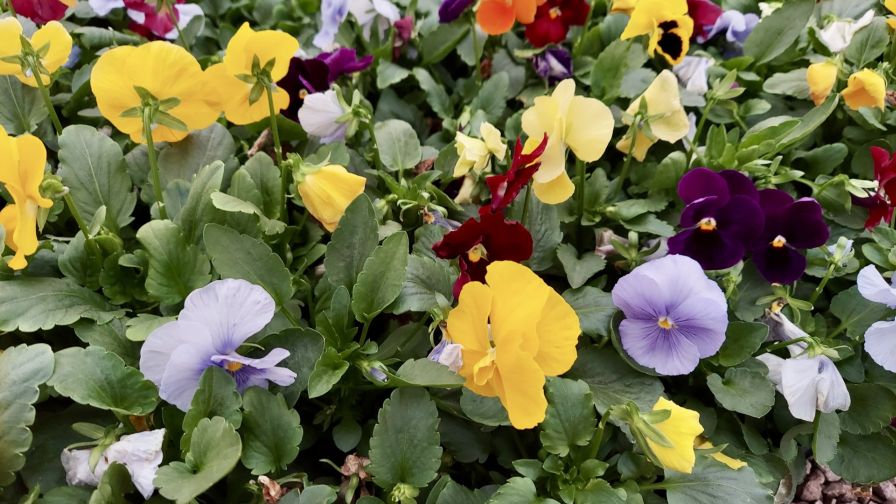Benchrunner Relay: Don’t Blame Customers For Failures
Marketing consultant Jerry Montgomery wrote us and his network of growers and suppliers in response to the overwhelming response we received after Hines Horticulture filed for bankruptcy. Many readers commented on our website that big box stores should be to blame, but Montgomery argues the big boxes are breathing life into the industry.
Here is what Montgomery wrote:
In the October issue of Greenhouse Grower, Delilah Onofrey reported in her editorial “Reading Chapter 11” (page 90) about all the comments received on www.greenhousegrower.com blaming the big boxes for the woes of a large grower whose customers are primarily big boxes. These comments also suggested these large organizations were putting the entire supply chain at risk, as well as lenders and brokers who offer extended terms.
Hello! The big boxes are our customers, providing over 7,700 retail outlets and reaching over 150 million consumers per week. Why in the world would anyone blame their customers for the inadequacies of the supply chain? For those brokers who offer extended terms and neglect to mange their accounts receivables portfolio they took risks but obviously did not mange those risks. They chased the large orders and did not factor the downside associated with delayed terms. No large company in this industry has ever filed bankruptcy or closed its doors without prior signs of trouble.
The big boxes are the largest customers in ornamental floriculture and may constitute as much as 60 percent of the wholesale purchases. And this makes them important customers–not enemies. Accordingly, look around the industry and you’ll see a number of companies who rely on these customers for 70 percent to 100 percent of their sales.
Few people take the time to understand the strategy and direction of these large retailers and, consequently, they try to serve them all the same way and with the same products and services–a big mistake. Each retailer has different strategies in green goods, and those who serve them the most profitably understand their direction. They design offers that are consistent with the retailer’s strategy.
In the home center segment, both retailers have indicated that lawn and garden is one of the few growing areas of their business. Consumers continue to buy garden plants even in a down economy, but they will shop differently in 2009 than they did in 2008. They’ll be looking for more value and less brand sensitivity, but more value driven products.
Drug Store News just released data from a consumer survey that indicated only 35 percent of U.S. shoppers buy foods based solely on brand preference. If that is the case, then what is the percentage that buys flowers solely on brand preference?
Know Thy Customer
Each retailer naturally has a different strategy, and a lot of this information can be found by checking the Investor Relations tab on their websites and reading their quarterly reports. Sam’s Club is providing a new opportunity by opening up Mas Clubs, aimed at the Hispanic market with the first store opening January 2009 in Houston.
Information can also be gathered by listening to the customer during sales calls and asking questions about their direction and needs. Good questioning and listening skills provide the ability to garner a lot of information. Information can be gathered by visiting the customer’s stores and observing their prices, sizes, marketing program, vendor performance and brand activity. Asking questions of the store personnel can also uncover issues related to how they operate and what they like and don’t like about their current supply.
Love Thy Customer
If you resent or dislike your largest customers then it would be wise to consider finding new ones because you will never be able to put your heart and passion into serving them profitably. A sound strategy that is successful is getting to know everything about them and getting connected with their people from store garden center personnel to vice presidents.
The most successful growers serving the big boxes constantly think about how they can make their customers more successful while managing a profitable company. These companies focus on helping their customer’s increase same store sales, improve gross margins and reduce discards. They want to make each retail location a pleasant shopping experience that drives repeat business.
One of the leading growers, when faced with the launch of pay-by-scan, was asked how he liked it. His response was it doesn’t matter whether he liked it or not. His company has two choices: not to do business or figure out how to make it work for the customer and our company. Today this grower is very successful.
Summary
Customers’ vendors and competitors do not put companies out of business. Companies that go out of business involuntarily make poor management decisions that lead to their demise recently highlighted by the number of sub-prime lenders who are no longer with us.
There are three national retailers that consume the largest portion of the industry output, and that portion will continue to grow. Many have found it profitable serving this group and have done so by helping them grow their business in a profitable manner. These companies certainly don’t hate their customers.










